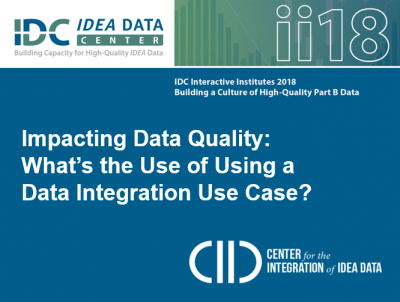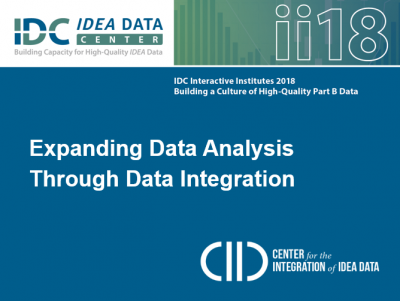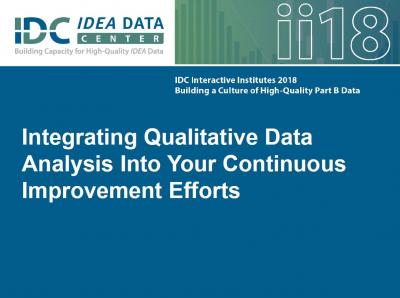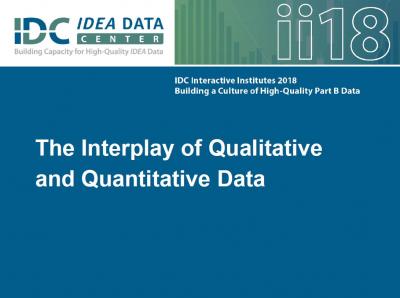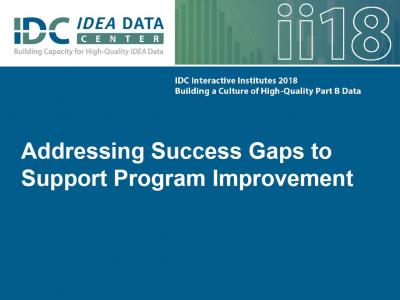Site Search
Results 15 - 21 of 158
Format: Presentations
Impacting Data Quality: What’s the Use of Using a Data Integration Use Case?Better data quality means better allocation of resources for students with disabilities. Participants learned firsthand how SEAs are using innovative tools and practices to improve data quality practices and procedures and how states can get involved in this meaningful work. Participants actively engaged in documenting the current state of their SEA’s data management practices and built a use case for IDEA data integration. They were able to see how CIID’s Generate tool is preparing 10 states for better data quality, more efficient reporting, and more effective data use through an integrated data system.
Format: Presentations
Expanding Data Analysis Through Data IntegrationEducation data tell the stories of students through their school experience and beyond. Integrating IDEA data into a State Longitudinal Data System provides the ability to tell a seamless story of a student with disabilities. For an SEA, data integration breaks down data and agency silos, and data analysis across the K-12 spectrum becomes the norm. In this session, participants learned from TA providers about the richness of the data analysis possible and how using integrated data can offer a more accurate and compelling story of how students, teachers, and districts are achieving education goals.
Format: Presentations
Integrating Qualitative Data Analysis Into Your Continuous Improvement EffortsWhen used together, qualitative and quantitative data provide strong evidence for change and can better inform continuous improvement efforts. This workshop focused on ways to conduct meaningful qualitative analysis and use it effectively with quantitative analysis. Participants had the opportunity to learn more about specific approaches to qualitative analysis and how to apply those approaches to an example dataset. Presenters then asked participants to think critically about how to use both qualitative and quantitative analysis to interpret and effectively present data.
Format: Presentations
The Interplay of Qualitative and Quantitative DataThis session provided a brief overview of various types of qualitative data collection methods. Presenters provided examples of different ways states can present qualitative data. They also discussed basic strategies for using qualitative and quantitative data together to support continuous improvement and evaluation efforts in states.
Format: Presentations
Using the Success Gaps Toolkit to Support Improvement ActivitiesLEAs in all states have many improvement initiatives underway at any one time. This workshop described how state and local staff can use the Success Gaps Toolkit to align various needs assessments and improvement strategies and use the data generated to support improved results for students with diverse learning needs. One state shared how it uses the Success Gaps materials with LEAs and some of the lessons it has learned.
Format: Presentations
Addressing Success Gaps to Support Program ImprovementThis session described success gaps and a process for identifying root causes of success gaps in achievement, graduation rates, or other results. This process can help teams dig deeply into a variety of data sources to identify and develop a plan to address gaps when not all students are experiencing equitable opportunities for learning and progressing.
Format: Presentations
A Critical Look at SSIP Phase III ReportingThis workshop provided an opportunity for participants to critique and discuss sample SSIP report excerpts. Guided table discussions focused on identifying strengths and ways to improve the presentation of data for a robust and succinct SSIP. States had an opportunity to develop action steps for completing their SSIP Phase III Year 2 report.

